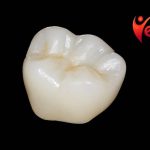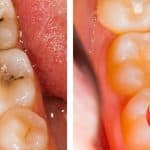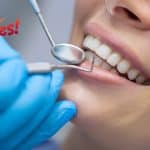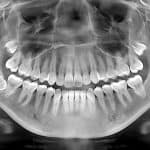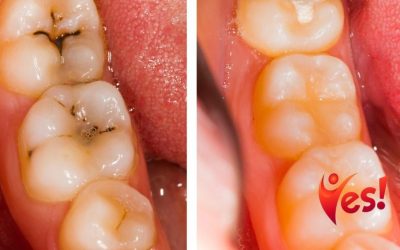Table of Contents
What’s So Special About Zirconia Crowns?
A zirconia crown is a dental restoration made from a monolithic ceramic. This material is durable, repairable, and blends in with the rest of your natural teeth. This is why it is the top choice for many patients. Learn more about this type of crown below. Also, read about the benefits of zirconia crowns. Here are some of the main benefits.
You will be able to smile confidently knowing your teeth are healthy and able to withstand any damage.
Zirconia crowns are made of monolithic ceramic
Since Zirconia crowns are made of a single piece of monolithic ceramic, they are remarkably resistant to wear and tear. However, there is some concern about their durability. Monolithic zirconia crowns can be brittle and may experience fatigue wear over time. These problems may require adjustments to the crown. To minimize fatigue wear, monolithic zirconia crowns should be adjusted before wearing them.
Despite its superior strength and fracture resistance, Zirconia restorations can wear against the opposing teeth. Thinner restorations can be applied but not below the manufacturer’s recommendation. This will decrease the restoration’s strength and might even lead to its failure. Additionally, the smooth internal surface of Zirconia will not allow for etching with hydrofluoric acid. These factors can reduce the life of your restoration if you experience any problems.
Although zirconia is stronger than metal, PFZ is less durable and more susceptible to cracking than monolithic zirconia. Zirconia crowns are generally made of monolithic zirconium, which is the strongest ceramic used in dental restorations. Moreover, they do not wear away quickly, so they are ideal for front teeth. Unlike metal, zirconium crowns are aesthetically pleasing, which is why they have become popular among dentists and patients.
While Zirconia is commonly discussed for its durability, many dentists still consider it inferior to metal. Despite these concerns, the benefits of monolithic ceramic crowns are far greater than the disadvantages. As with any prosthetic restoration, there are many advantages to using Zirconia. Aside from their high strength, they can last a lifetime. Therefore, they are an excellent choice for many routine restorative procedures.
When compared to a gold crown, zirconia crowns are more expensive. In fact, they can cause wear and tear on the teeth opposite to the one they’re fixed on. As a result, a zirconia crown is not a good choice if you’re suffering from a weakened tooth. In addition, it’s also possible to have root canal issues fixed with zirconia crowns.
They are durable
Choosing a dental crown made from zirconia is an excellent choice for many reasons. They are highly durable and withstand most chewing and biting activities without causing problems. This material is also biocompatible, meaning it is hypoallergenic. This means there are very few risks of allergic reactions, and a zirconia crown will require less tooth structure. Here are some of the most important benefits of zirconia crowns:
Despite their durability, there are several factors that should be kept in mind before undergoing a dental procedure. The first is the patient’s oral health. Zirconia crowns are highly resistant to wear and are extremely esthetic. Another factor to consider is your budget. High-quality crowns will last a long time, but it may cost more than you originally thought. Whether you are in need of a restorative procedure or a cosmetic one, a zirconia crown is a smart choice.
As an alternative to Emax crowns, zirconia crowns are also highly durable. They can withstand high pressure and blend in with the surrounding teeth. However, they do not have the lifelike appearance of Emax crowns, and they cannot withstand close examination on molar teeth. To prepare your tooth for an Emax crown, your dentist may take X-rays and make a mold of your mouth.
Zirconia crowns are a great choice for posterior teeth. These custom crowns are also a good choice for front teeth. Zirconia crowns are the best choice for front teeth. They look natural, and are durable. They will not show up on your smile or cause pain. Therefore, they are an excellent option for patients who are concerned about their smile. For more information, contact YES Dental Care for Dentistry & Implants today.
Zirconia is a highly durable material that ranks on the Mohs scale. Similar to titanium, it is very hard and durable. For this reason, zirconia is often chosen for molars and premolars. This type of crown is designed to protect the molars from sensitivity and other oral problems. Zirconia is a great choice if you need a crown that will last for many years.
They can be repaired
Despite the fact that they can last a lifetime, zirconia crowns can suffer chipping and need repair. Luckily, modern ceramic materials and techniques make them possible to repair, as well. This article discusses the various types of restorations and their repair options. This is particularly true of zirconia crowns. Using multiple key words to choose a sample, we reviewed peer-reviewed literature on chipping in English. The initial search returned 189 articles. Researchers found that veneered zirconia-based restorations can chip between zero and four percent.
The zirconium-coated tooth is composed of cement and chemical adhesive. These materials have excellent bonding abilities, and they also resist abrasion. Using the right cement, however, will help extend the lifespan of your zirconia-coated teeth. During the process, patients should avoid forcing foods into their mouths or using a straw. Once the procedure is completed, patients can resume their normal eating habits. Zirconia crowns can be used for several years, but you should still avoid using them on your own.
If you have an existing ceramic-coated crown, the procedure to repair it is a simple process. In most cases, the existing crown can be replaced without any pain or downtime. The new one should be installed in late October, after the tooth’s nerves have settled down. A new dentist can offer sedation to ease nervousness before the procedure. If the fracture is too severe to be repaired, you may want to consider a more advanced cosmetic dentist. Dr. Finley is skilled in zirconia crown repair, and has extensive experience with zirconia.
While zirconia crowns are technically porcelain, they are made from an artificial stone, zirconium dioxide. They are very durable, measuring 8.5 on the Mohs hardness scale. These crowns are often made to fit small spaces, so they look like natural teeth. Zirconia crowns are also very resistant to wear and tear. And unlike metal crowns, zirconia crowns can be repaired if needed.
They blend in with natural teeth
Compared to other materials, zirconia crowns are highly aesthetically pleasing and blend in with the surrounding teeth. They are also made to be durable and aesthetically pleasing, and the CAD/CAM technology used in the manufacturing process allows the crown to be precise. Moreover, zirconia crowns are durable, lasting up to 10 years. Here are some benefits of zirconia crowns:
One of the main benefits of zirconia dental crowns is that they can be easily recolored or shaped if necessary. The metal that forms the crown can be custom-stainred to match the color and shape of the surrounding teeth. During the first placement, the dentist can make slight adjustments by using diamond burs or green stones. Zirconia crowns are cemented into the mouth using dental cement that is made from glass ionomer.
Despite their superior strength, zirconia dental crowns are still thin and require minimal tissue removal. This means that a zirconia dental crown will blend in with the rest of the teeth, leaving less of your natural tooth exposed. Zirconia crowns are available in several different forms and have varying levels of translucency. Because they blend in with natural teeth, you will not even know you have a dental crown.
Because zirconia crowns can be made to look natural, they are not as obvious as porcelain crowns. However, the ZMAX material used to create zirconia crowns helps to blend the material with the rest of the teeth. This allows the crown to blend in with the rest of the teeth and give your smile a beautiful makeover. If you’re unhappy with the color of your teeth, you should consider porcelain or emax crowns.
While a traditional dental crown may be made from metal, zirconia crowns are made from a biocompatible ceramic material called zirconia. This material is highly durable and resists wear and tear, and it does not require unsightly metal substructure. Moreover, zirconia crowns are made to fit snugly to the tooth. Compared to conventional porcelain or metal crowns, zirconia crowns require less time in the dental chair.
Zirconia Crowns Problems
What are the disadvantages of zirconia crowns? How are they placed? How do they compare with other types of crowns? Are they expensive? And how durable are zirconia crowns? Keep reading to find out! This article will discuss some of the most common problems associated with zirconia crowns. Plus, we’ll discuss some of the best ways to take care of your new zirconia crown.
Techniques for placing zirconia crowns
One of the benefits of zirconia crowns is their durability and strength. However, a zirconia crown can cause excessive wear on neighbouring natural teeth, so special attention must be taken in the design and placement of the restoration. Most dentists place zirconia crowns in the back of the mouth, where they need more strength than the front teeth. The procedure for zirconia crown placement is the same as for traditional crowns and requires two office visits.
A zirconia crown can be very expensive, but it is also durable. Because zirconia is very hard, it can wear teeth in the opposite arch. Consequently, some dentists are hesitant to use this material in crowns. However, there are several advantages to zirconia crowns. Zirconia is biocompatible, which means it will not provoke an immune reaction. Moreover, many dentists are equipped to place zirconia crowns in the same appointment.
Cost of zirconia crowns
If you have a tooth that needs a crown, you’ve probably heard about zirconia crowns. But did you know that they can also have problems? This is one of the main reasons why you should find a dentist who specializes in zirconia crowns and bridges. This is the best option if you have a tooth that needs a crown, but you should be aware of the possible problems associated with this type of dental restoration.
Another problem with zirconia crowns is that they tend to break easily, and this is not something that you want. However, the cost of zirconia crowns is well worth it in the long run. The price is comparable to other dental crowns, and they last for a long time. But if you want to spend less in the long run, you might want to consider getting a cheaper one.
Fracture resistance of zirconia crowns
In this study, we investigated the fracture resistance of zirconia crowns fabricated with limited marginal thickness. The experimental group received zirconia crowns with marginal thicknesses less than one millimetre, while the control group received zirconia crowns with a margin thickness of one millimetre. We found that fracture resistance decreased by three hundred and forty N for every 0.2-mm decrease in marginal thickness.
The fracture resistance of zirconia crowns was assessed with the help of the fracture mode, high-translucency monolithic ceramic crowns, and porcelain-veneered zirconia (PVZ) crowns. The study was carried out using master dies scanned to produce the different types of zirconia crowns. The results indicated that both types of zirconia crowns exhibited the same level of fracture resistance.
Advantages of Zirconia Crowns
Among the many advantages of zirconia-crowns, biocompatibility and durability are the most important ones. But aside from durability, zirconia crowns also look natural. To understand these advantages in detail, read on. Here we will discuss their advantages. Moreover, we will look at biocompatibility and durability. Listed below are some other benefits of zirconia-crowns.
No metal lining at the gums
Zirconia crowns are more aesthetically pleasing than full porcelain crowns. They are made entirely of zirconia, a durable material that does not chip or crack like porcelain. Zirconia crowns are five times stronger than porcelain. Because of their durability, they are the ideal choice for bruxism cases. The pros of zirconia crowns are numerous.
Another perk of zirconia crowns is the fact that they do not show a metal lining on the gums. PFM crowns will show a gray metal lining on the gums. However, the higher-quality dentists will pay extra to get a dental technician to trim back the metal margin and bake a special “margin porcelain” onto the crown. This will make the tooth look much more attractive than a metal crown. And, as a bonus, you will not see a metal lining at the gums, which is a common side effect with porcelain crowns.
Durability
While porcelain and zirconia are similar in their appearance, zirconia crowns are more durable and can last up to 20 years. However, they can cause additional wear to the natural tooth underneath the crown. This wear can lead to recurrent caries and tooth decay. That’s why patients should discuss the pros and cons of zirconia before getting the procedure. Ultimately, zirconia crowns are the best option for your smile.
Zirconia is a metal oxide. It is incredibly strong and is more resistant to wear and tear than other types of dental materials. It is also incredibly beautiful, as it contains glass components and is resistant to acid and etching. This also helps to ensure the durability of zirconia crowns, which are becoming increasingly common in dentistry. Zirconia crowns have several advantages. First of all, they are highly aesthetic and durable, making them an excellent option for front teeth.
Biocompatibility
A large number of dentists are choosing zirconia for their crowns because of its biocompatibility, or ability to work within the body. One in vitro study in 2016 found that zirconia was biocompatible, meaning that it had little cytotoxicity. Another plus to zirconia crowns is that many dentists can create and cement the crowns in one visit. That means no second or third appointments for patients!
Zirconium oxide is a biocompatible material, and unlike porcelain, it has high flexural strength of about 1200-1400 MPa. It also causes less wear on the opposing teeth than porcelain or zirconia crowns, which are used for front teeth. Although zirconia crowns are biocompatible, they do not look as natural as porcelain or other dental materials. For example, natural teeth grind at a pressure of over one thousand pounds per square inch (psi).
Look natural
Zirconia crowns look as natural as your own teeth. Because zirconia is a naturally translucent material, the crowns are almost undetectable in your smile. Additionally, they’re extremely durable, especially since front teeth don’t experience the same amount of chewing pressure as molars. Therefore, zirconia crowns are very effective in improving the appearance of your smile, and they’re also a strong option for restoring your teeth.
Compared to porcelain crowns, zirconia crowns look more natural. Zirconia is indestructible, making it more durable and long-lasting than porcelain fused to metal crowns. Moreover, zirconia crowns require minimal preparation, making them less likely to wear down opposing teeth. This means you can enjoy a natural-looking smile without paying an arm and a leg for your new crown.
Zirconia Crowns Disadvantages
Zirconia crowns have several advantages and disadvantages, and we’ll cover some of these in this article. These include: Durability, Biocompatibility, and Expensiveness. However, they are not the only drawbacks of this material. You should also consider their biocompatibility, durability, and aesthetics. So, what’s the downside of zirconia crowns?
Hard to match to natural teeth
The reason zirconia crowns look less natural than ceramic is that they are harder to match to natural teeth. Because zirconia is harder to match to natural teeth, it is not always possible to make them look as realistic as natural teeth. The best option is to find a dentist who is trained in prepping teeth for this procedure. Moreover, not every dentist is qualified to apply zirconia crowns, so choosing the right one is important.
Zirconia crowns are often crafted to match the color of your existing teeth, which is important to you if you want to make them look more natural. The color of zirconia can also be customized to match your other teeth. Your dentist will be able to match the color of the crown to your natural teeth. If you’re unhappy with the color, you can always change it if necessary.
Expensive
Although Zirconia crowns are more expensive than traditional gold and porcelain crowns, they can be the best choice for certain situations. They can be long-lasting and durable, and you may not have to go through the pain and hassle of a temporary crown. Additionally, they require fewer office visits than other types of crowns. Zirconia crowns are ideal for posterior teeth, which tend to be more prone to wear and tear.
Zirconia is the best choice for crowns because it’s completely biocompatible, which means it won’t cause a reaction from your immune system. Unlike porcelain, Zirconia is not susceptible to staining or discoloration. And since they can be made in any shape or size, they can also cover up core damage. Because Zirconia is so strong and durable, they can also hide damage to the tooth’s core. However, because they’re so expensive, many people hesitate to have Zirconia crowns.
Durable
Unlike other materials, durable zirconia crowns can be customized to fit the patient’s unique needs and aesthetic needs. They are available in various sizes and styles and can be used for a variety of dental procedures including cosmetic restoration of discolored teeth, structural coverage of teeth that have experienced damage, and even the supporting ends of dental bridges. They can be made from either ceramic or zirconia to enhance a patient’s appearance.
One of the most appealing aspects of durable zirconia crowns is their appearance. Unlike porcelain crowns, zirconia does not decay or corrode, making them suitable for long-term use. You can maintain your zirconia crown by brushing your teeth with a soft toothbrush or toothpaste with no abrasive detergent. If you have a child who will be using your new crown, it is important to ensure that the child has a brush that does not cause damage to the zirconia material.
Biocompatible
Biocompatible zirconia crowns are a growing trend in dental restoration. These materials have similar properties to titanium, a metal that has long been used in dental procedures. Most commonly, titanium is used as the base for dental implants. Since the early 2000s, zirconia crowns have become an increasingly popular choice for dental professionals. Read on to learn more about this material’s advantages and disadvantages.
Porcelain Fused to Metal (PFM) crowns are becoming less common due to their character flaws. The metallic components chip and break easily. Newer materials do not exhibit these defects. These benefits are what make biocompatible zirconia crowns such an ideal choice for many patients. And the procedure itself is less time-consuming and expensive than traditional metal crowns. If you’d like a biocompatible crown, be sure to ask your dentist about the latest technology available.



